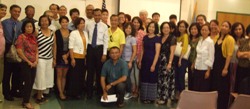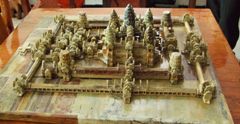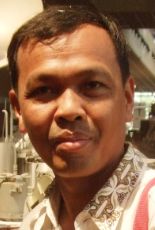Battambang Province
Table of Contents
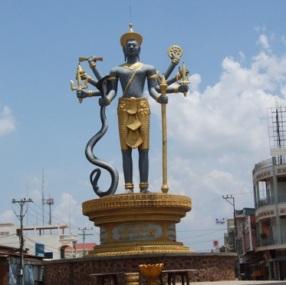
Overview

Battambang is a large and important province in the northwest of Cambodia. Its name literally translates as "the lost long stick" legend. Along with various local legends beautiful countryside, hills and many Angkorian temples, it is regarded as a vital agricultural area. Originally, during the Angkor period, the area was split in to many territories, namely Amogha Boreak and Bhima Boreak. Throughout this period, the region prospered due to the hospitable environment for growing fruit, vegetables, and other produce. In the 15th century however, when the Siamese army began to invade the regions to the northwest, the provinces ' locals were driven out of their homes, and land was confiscated. Three centuries later, until the 20th century, Battambang was under the rule of the Siamese. At the start of the 1900 's however, descendants of the people who once occupied the region demanded that land, which had been previously confiscated, should be returned to the rightful owners. These claims were based on the French Siamese Treaty of 1907. Indeed, the land was returned, and in the same year, the entire province was split in to three separate provinces, namely Battambang, Siem Reap, and Serei Sophorn. The areas then underwent a number of further alterations, both in geographical and textual terms, until the 1940 's. At this time, the province of Battambang was made up of 7 separate districts. In the following 40 years, the province underwent an excruciating ordeal of killings, torture, and other human rights abuses. This period is now referred to as the period of the Killing Fields. The last stronghold of the Khmer Rouge was in Battambang. Finally in 1979, genocide was halted in the region, and the historic first election in the area was held in 1993.
Geography

Battambang is located in the northwestern region of Cambodia. It is bordered by the Tonle Sap Lake in the east, Pursat province to the southeast, Thailand and Pailin province in the west and Banteay Meanchey to the north. Battambang covers an area of 4900 sq. mi. 664 sq. mi. is towns and villages, 1021 sq. mi. is agricultural land and 1840 sq mi. is forest. The rest is flooded land. As it stands today, the province has 13 districts. About 70% of the people are farmers. Its capital, Battambag, is Cambodia 's second largest city. It is the main highway and rail crossroads connecting Phnom Penh with Thailand. It is about 181 miles (291km) from Phnom Penh. National Highway Route 5 and train are ways to get to Battambang from Phnom. Boat and air travel are also available to and from Siem Reap. The Cardamom Mountains, with rainforests, wildlife refuges, and environmentally protected areas, spread into the southwest corner of Battambang province from neighboring Pursat province.
Economy
Known as the Rice Bowl of Cambodia, indeed of Southeast Asia, the province has a strong agricultural economy with a great production of rice. In the 2006 rainy season 2,440.14 km of rice, were cultivated for production and the average rice yielded 2.2 tons per hectare, with the total output standing at 536,830.80 tons. With the amount reserved for consumption, seeds, animal food, and waste during harvest, there were about 300,000 tons left for sale.
In addition to rice, subsidiary crops were also planted include corn, red corn, cassava, sweet potatoes and many other crops including green beans and chilies. There was a total of 194 sq. mi. of industrial crops with ground nuts, soybean, jute, sugarcane produced. The Province also produces notable quantities of pineapple, sesame, grapefruit, oil palm and saffron.
Besides arable farming, local people mainly indulge in livestock breeding, rice seed production, the production of animal fodder, etc while few operate animal breeding farms. Strategies laid out by the Ministry of Agriculture, Forestry and Fishery, have intended to aid the transition from the tradition of growing long-term rice varieties to using medium-and short-term varieties and practicing nature-based intensive rice farming.
Battambang Province has 12 fishing lots and commercial fishing exceeded 7,000 tons in 2006 of which 990 tons of rice field fish were caught by local families. The province has 37 fishing communities, each with over 300 members.
Climate
In Battambang are mainly two major rainy season and dry seasons. Rainy season starts from June to November and Dry season starts from December to May. The hottest weather comes in the dry season, which temperature rise up to 100 Fahrenheit (38 Celsius) and sometimes decreases to 68 Fahrenheit (20 Celsius).
Tourist Attraction
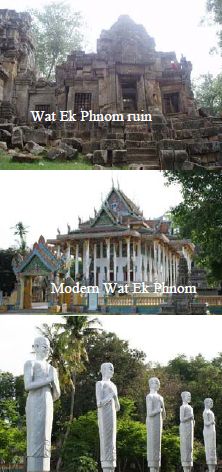
Battambag is home to some spectacular sceneries, which makes walking, tramping, and sightseeing a must for any visitor. Numerous historic ruins are open to the public, one of which is Wat Ek Phnom which was built in the 11th century during the reign of Soriyava­raman I (1002 1050), but now sits within the grounds of a modern pagoda. The temple is surrounded by 18 bodhi trees. The abundance of water in the form of lotus ponds, streams and the like give this place a relaxing feel. The temple and ruins lie 10 kilometers north of the Cobra River, and are at the bottom of a hill, hence only limited exercise is required to reach them.
For a more enduring experience, Phnom Banan is a mountaintop temple built in the Angkor period. The temple is still in relatively good condition, however pillaging and looting was once rife in the area, and the effects of this are noticeable. Nevertheless, this is an excellent sight to see, and any tourists to the area should be sure to check out at least a few of the many temples, as they certainly build a cultural and historical awareness. Other attractions worth a note are the Phnom Sampeou Mountain, the Kamping Puoy Reservoir -an incredible engineering project, Wat Pee-Pahd - an important symbol of Buddhism in Battambang, and the Gold Buddha Hill. As you can see, a tourist will not be lost for things to do in the province.
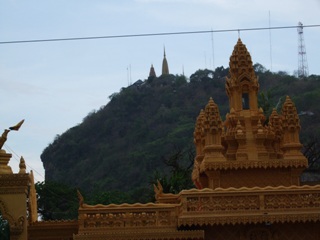
BambooTrain

"Nories", the Cambodian word for bamboo trains, are one of the "must sees" of Battambang, if only for their novelty value. Formed by two sets of railway wheels, a bamboo mat, and a generator, these are an impromptu way of travelling up and down the railway line in lieu of the real train. When the real train shows up, all the nories disappear. They are also a great way to see rural Cambodia well of the road network. When two nories meet coming in opposite directions, the one with the lighter load is dismantled and removed from the track, allowing the other to pass. Powered by a small motor, they can carry motorbikes making a nori ride easy to combine with a motodop (motorcycle taxi) trip.
Special Characteristic
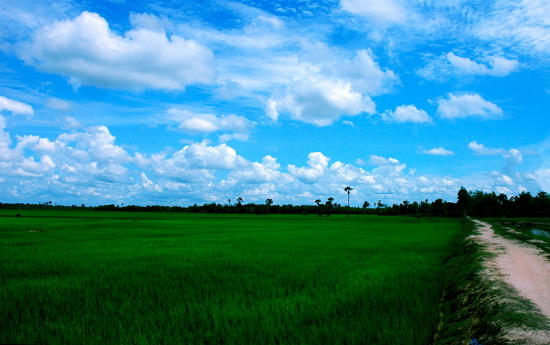
The area is known locally and internationally as the "Rice Bowl" of Cambodia. This is because the economy of Battambang is extremely efficient in the production of rice, and additionally because of the comparative advantage and local endowments in the region. An estimated 2,400 square kilometers of land is used in rice production, with the figure growing consistently each year. The abundance of land results in over 500,000 tonnes of rice being produced annually; around 300,000 tonnes of that rice is traded locally and internationally.

